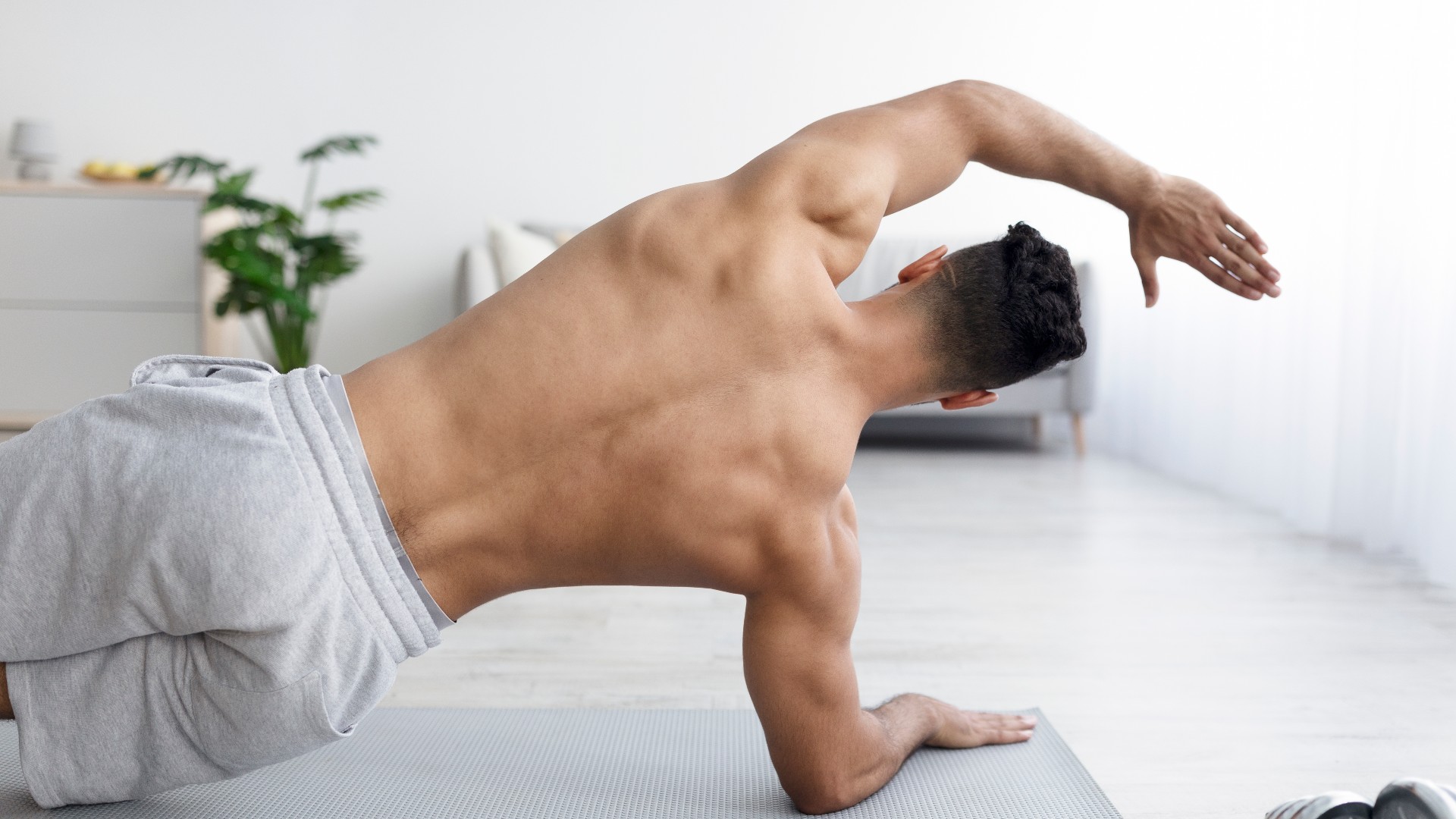
If you want to improve posture and sculpt your back and core muscles, a back and core strengthening workout is just what you need. You don’t need pull-ups or heavy weights to build strength in your posterior chain — just this five-move bodyweight workout.
Although there’s an abundance of bodyweight upper and lower-body workouts, it can feel tricker to hit your back muscles hard in the same way, with the same intensity. But by using clever techniques plucked straight from the 5 best ways to build muscle without lifting heavier weights, you could develop your muscles without weights at home.
The moves below are suitable for beginners and experienced weightlifters. If you’re returning from injury or suffer from lower back pain, check in with a qualified physician before trying these exercises. And for all bodyweight workouts, we recommend the best yoga mats for supporting your joints.
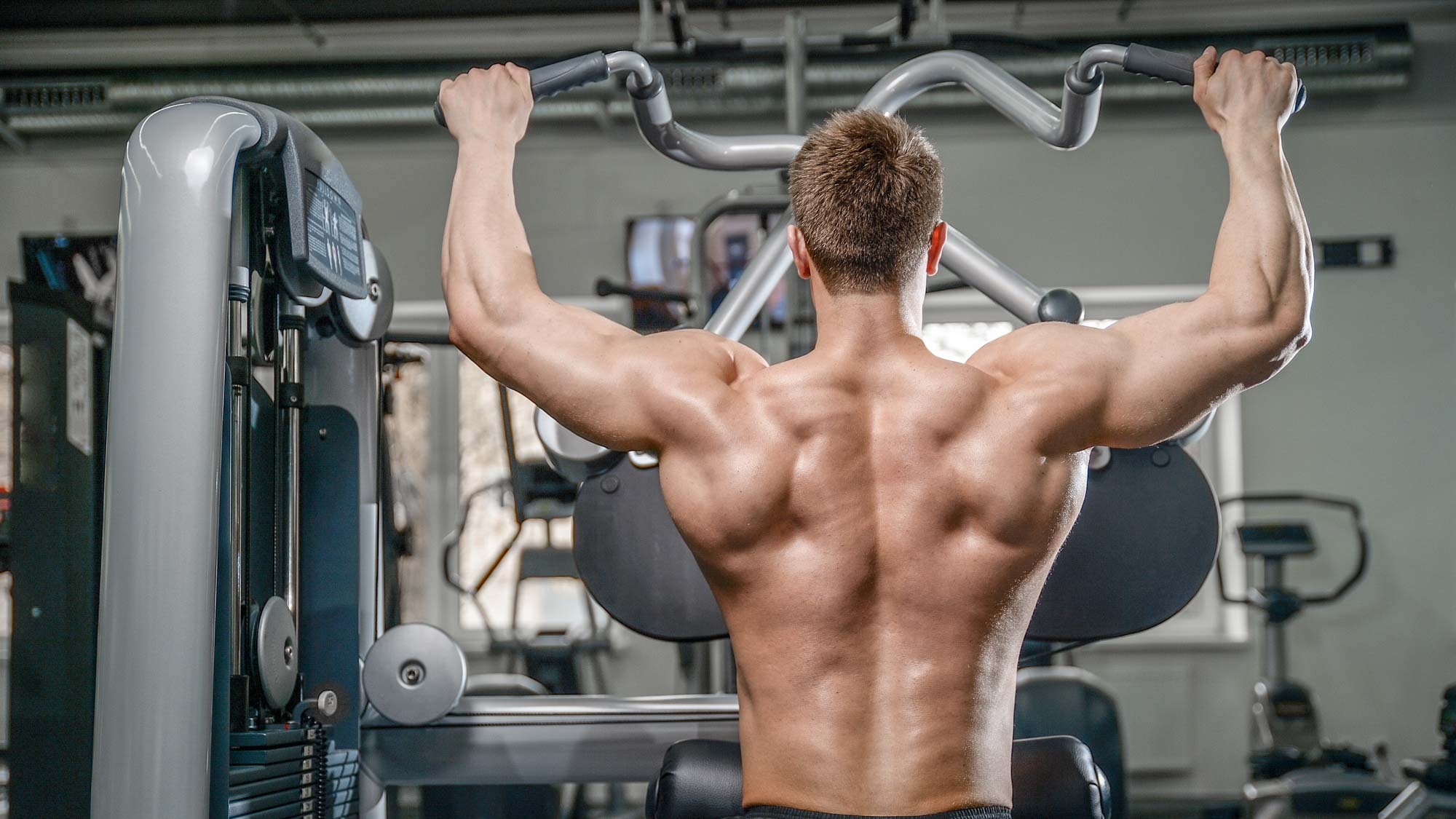
Each exercise targets the various muscles in your back, including your lats, erector spinae, rhomboids, trapezius, rear deltoids, and core muscles. Strong back and core muscles are responsible for good posture, protecting your lower back from injury, supporting trunk movement, and improving overall strength across your upper body.
Some of these exercises also activate your glutes — muscles that should be strong to protect your back. But building a powerhouse back isn’t easy. These complex muscles comprise intricate, deeper muscles alongside large ones like your lats.
To develop your back muscles, you’ll need to focus on muscle engagement across various planes of motion — forward and back, side-to-side, rotation, and vertical (up and down). Give your muscles a good squeeze, including your core, rather than relying on your shoulders and arms to do all the work — this encourages engagement across different muscle groups.
15-minute, 5-move back and core bodyweight workout
Perform each exercise for 50 seconds with a 10-second rest before starting the next exercise. Try to hit 8-12 reps of each exercise for 3-4 rounds.
1. Ab rollout variation
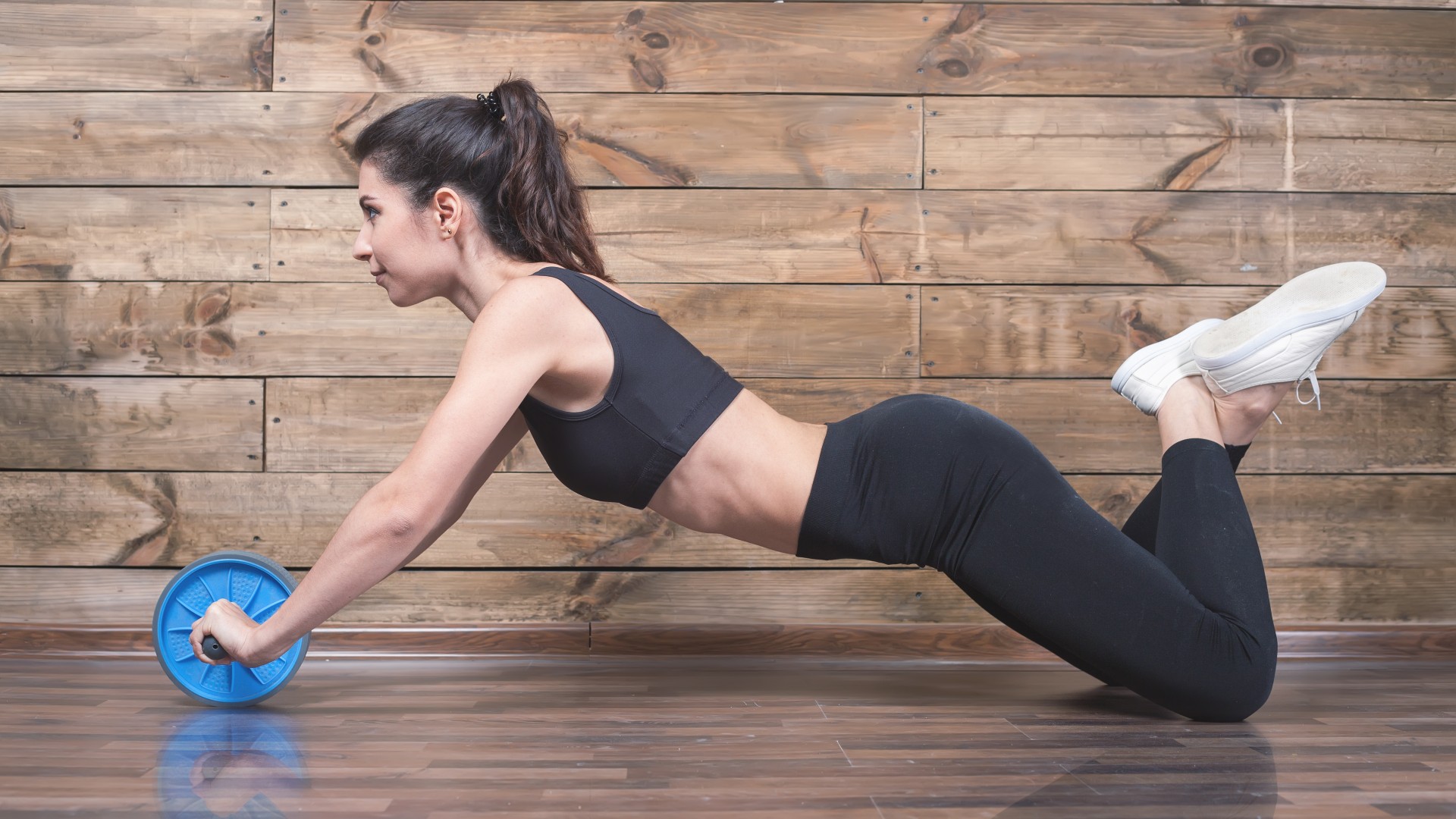
Ab rollouts hit the muscles in your back and core by targeting the rectus abdominis, erector spinae (spine stabilizers), transverse abdominis (a deep belt of core muscles), lats, chest, shoulders, and arms. Avoid this exercise if you experience shoulder pain or rotator cuff injury.
How:
- Place two sliders or a towel onto a smooth surface like wooden floors instead of using a roller
- Start in a kneeling position with your mat loosely rolled underneath your knees for support
- Place both hands on the sliders (or whichever item you’ve chosen), shoulder-width apart
- Engage your core, tilt your pelvis toward your spine, then shift your weight forwards with shoulders stacked over your wrists
- Slowly push forwards while keeping your stomach and shoulders braced and a soft rounding through your upper back
- Keep your hips lifted and pause when you’ve extended as far as you can
- Drag the sliders back towards your knees to your starting position.
2. Prone back extensions
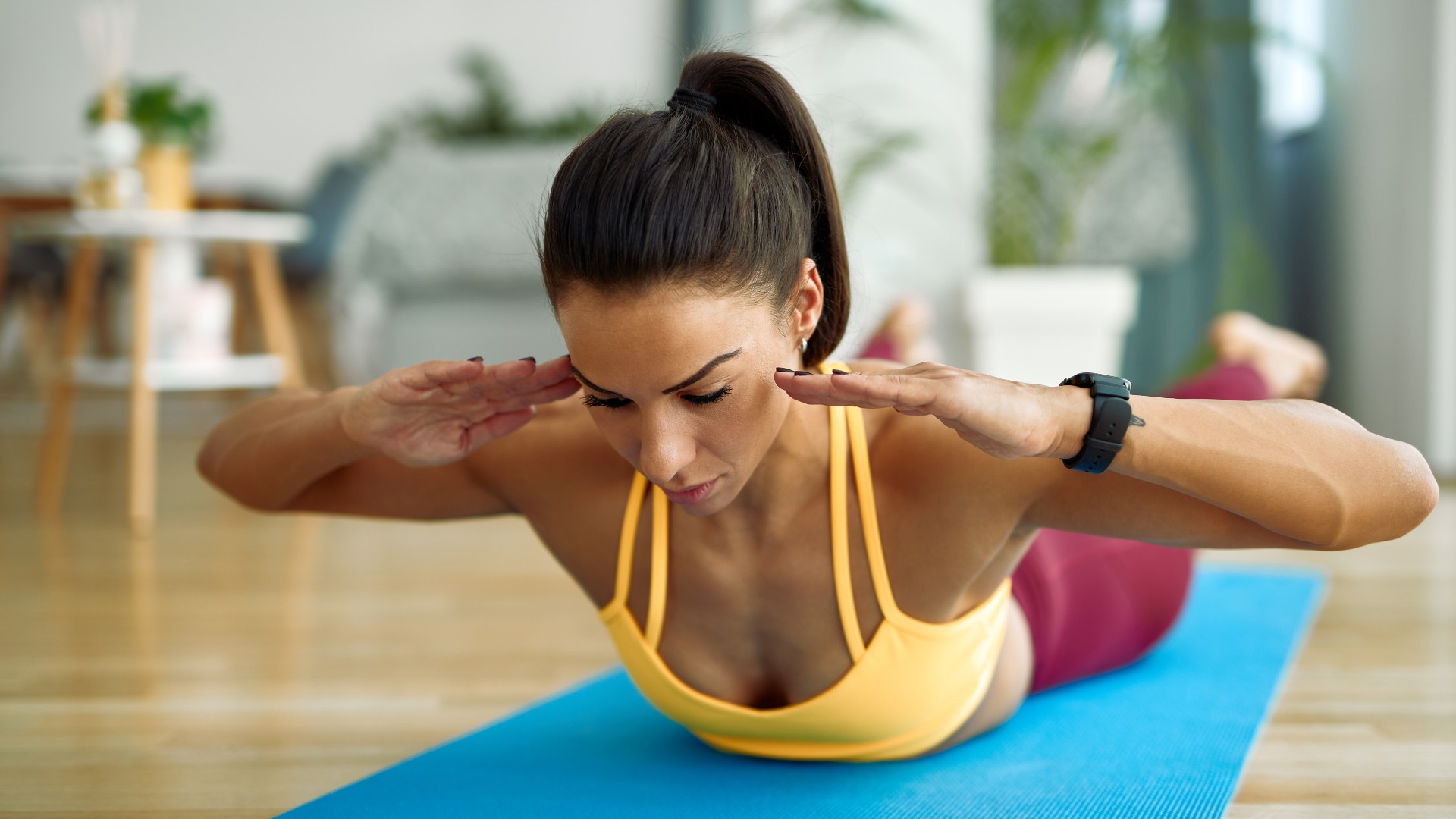
Back extensions target the posterior chain, including your erector spinae, glutes, and hamstrings.
How:
- Start on your stomach with your hands behind your head and elbows pulled back
- Squeeze your shoulder blades together, then engage your glutes, core, back, and hamstrings
- Lift your chest off the floor as high as possible while keeping both elbows pinned back
- Pause at the top, then slowly lower back down for one rep.
3. Prone lat pulldowns
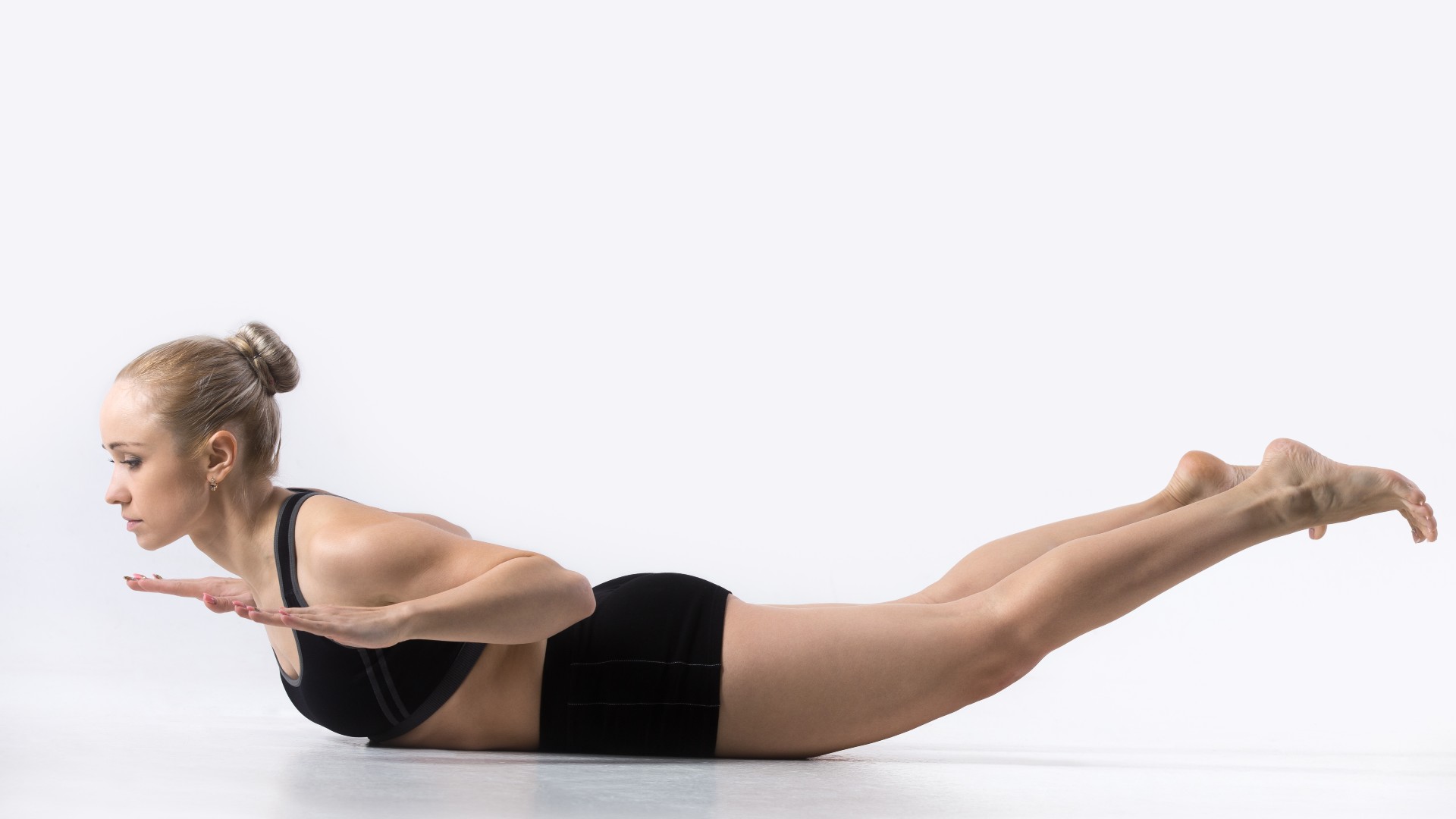
This exercise hits your lats, biceps, rear deltoids, trapezius, and rhomboid muscles. You can also build bigger lats with these 3 lat pulldown variations.
How:
- Start on your stomach and extend your arms overhead on the floor in front of you
- Engage your glutes, core, back, and shoulders, and lift your chest and arms off the floor
- From here, bend your elbows and drive them down towards your ribs, keeping your chest lifted
- Pause, then extend both arms overhead again for one rep. Try to keep your chest lifted throughout and squeeze your back.
- If you'd like to engage more of your legs, lift them (see above).
4. Scapular push-ups
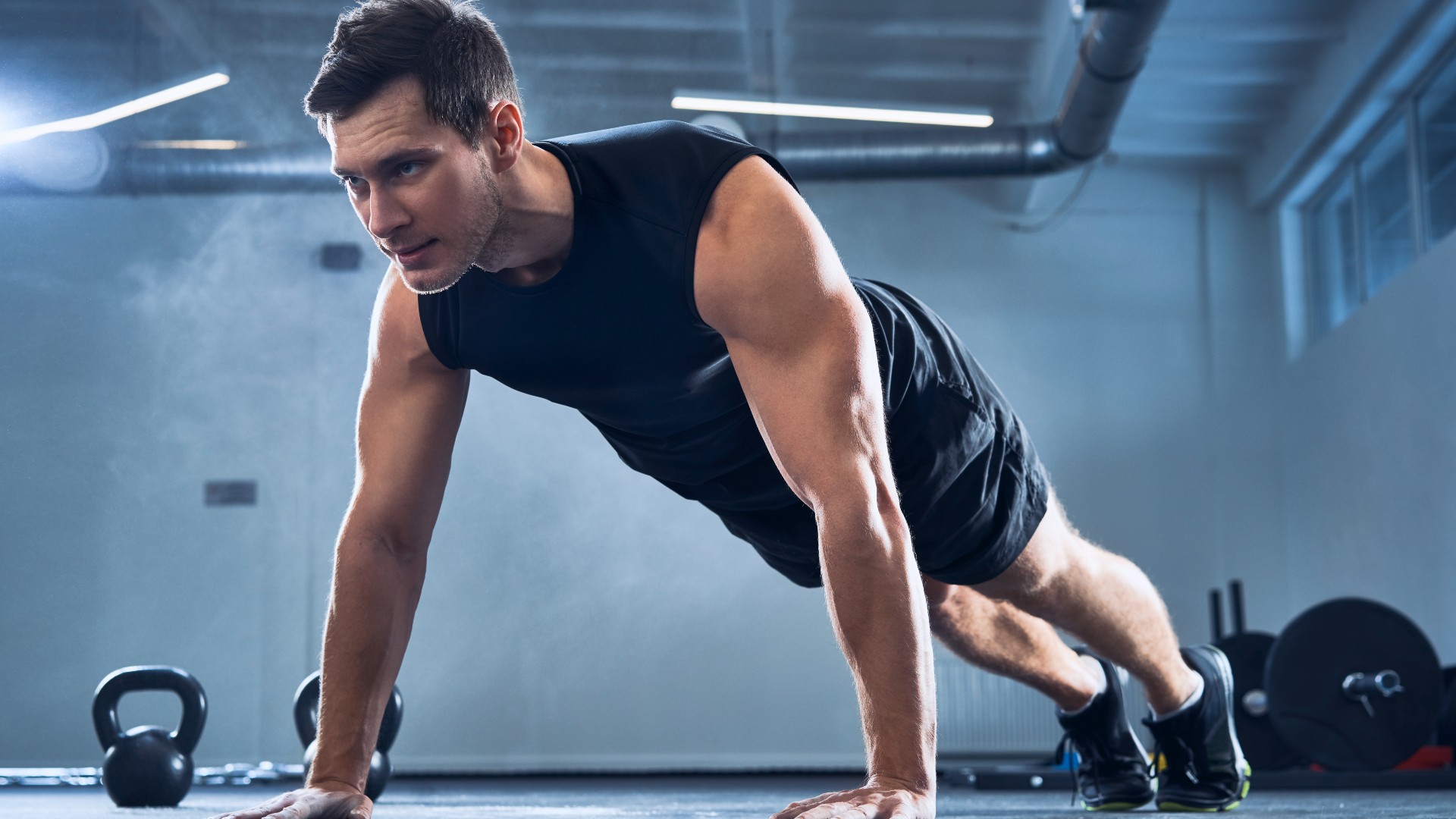
Scap push-ups don’t look that impressive, but they’re tough. The exercise improves shoulder stability and builds strength in the serratus anterior — the muscles that keep your shoulder blades flat — using a limited range of motion. If you need to, place your knees down for this exercise. Imagine doing a push-up, just without bending your elbows.
How:
- Start in a push-up position and keep your core tight
- Contract as many muscles as possible to create a solid foundation
- Keep both elbows extended at all times and lower your chest toward the floor without dropping your hips
- Push your upper back toward the ceiling, back to your starting position.
5. Forearm plank pikes
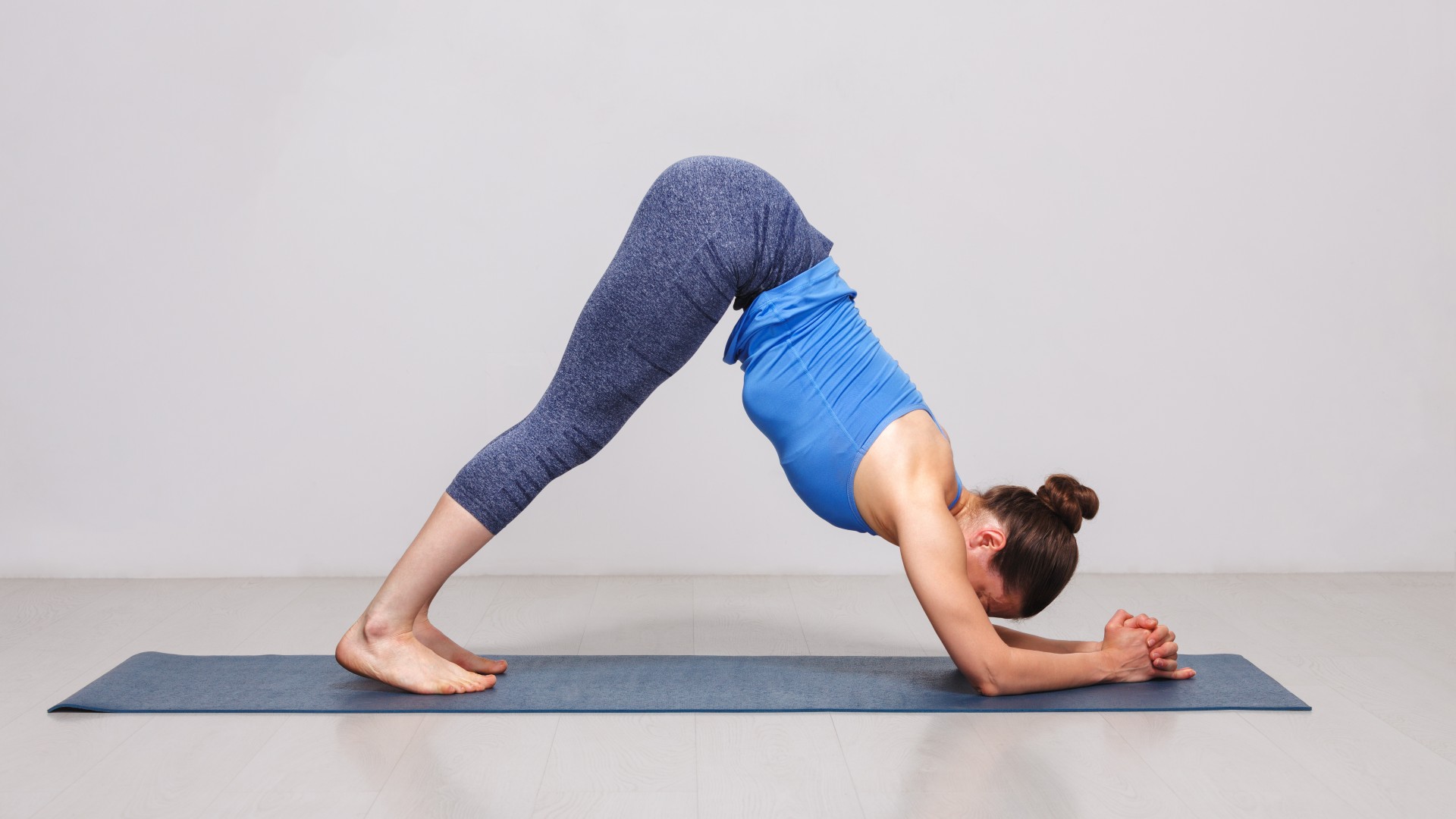
The move stretches and strengthens the muscles in your shoulders, arms, chest, back, core, hips, and legs and helps develop flexibility and mobility in your spine, legs, and hips. Plank pikes also build core stability.
How:
- Start in a forearm plank position with elbows stacked underneath the shoulders. Maintain a straight line from head to toes
- Lift your hips high and push slightly back into a pike position, lifting onto the balls of your feet with straight legs
- Press out of your forearms
- Avoid rounding your back and keep a neutral spine
- Squeeze your abs, back, and glutes. Pause, then lower back into the plank.
For each exercise in this routine, focus on squeezing and pausing at the top of each move, contracting as many muscles as possible. A hack that works for bodyweight training is time under tension (TUT), which means working your muscles through a range of motion for longer by slowing down the exercise.
TUT is also brilliant while doing the best ab exercises. Working longer through a full range of motion will light a fire through your muscles — even just by using your body weight. However you approach these moves, if you feel any lower back pain at any stage during this workout, stop immediately.







